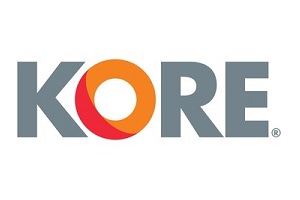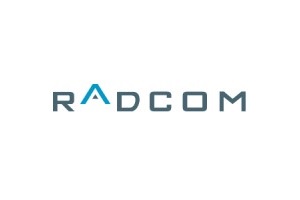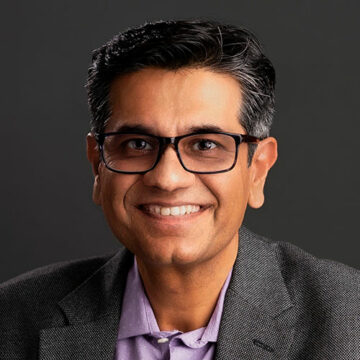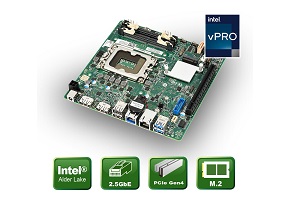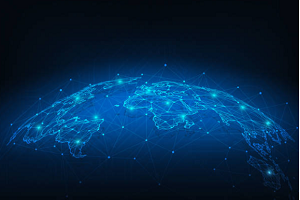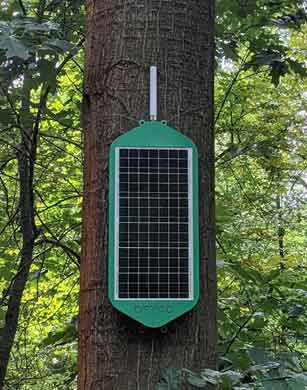Today, whenever we turn on a news channel, climate change and sustainable growth are two of the most prominent topics, leading to an emphasis on sustainable growth initiatives, says Ritesh Sutaria, Prompt Softech CTO and director.
The production and generation of renewable energy, like solar and wind energy, complemented with IoT device implementation, are crucial steps towards sustainable growth. Smart solar energy systems provide a cost-effective, efficient, and environmentally friendly approach for commercial as well as personal consumption.
Driving IoT-powered solar systems
IoT-powered solar solutions allow the deployment of automated controls to enhance the productivity of the entire production process. They face a number of challenges like loose connections, dust accumulation over panels, or damage on solar panels, but these can be monitored and checked in real-time.
Advantages of adding IoT in solar energy production:
- Real-time remote monitoring IoT-enabled remote sensors implanted in individual solar panel monitor essential parameters like malfunctions, temperature, energy output, tilt angle, and more in real-time. They offer an instant visual overview of the panel output.
- Automated operations IoT-enabled devices support automation, grid management, and smart operation of solar energy farms. Monitoring systems offer automated data logging, performance evaluation, and tracking of components, which was previously a big challenge because primary solar panel installations were often relatively inaccessible due to their placement and location.
- Market forecasting IoT-driven smart metres gather data on total consumption data to help project future needs using machine learning technologies.
- Advanced security features Improved IoT sensors are well-equipped to combat malicious attacks. For example, Google Cloud IoT Core offers hardware root of trust, and Microchip offers security as a service (SaaS) for IoT-driven systems.
What are the initial investment costs and chief concerns?
- Primary investment cost: Upgrading the grid with multiple IoT sensors, monitoring devices, and data storage becomes part of a primary investment.
- Cyber Attack: The most common problem with IoT devices is security. They are prone to cyber-attacks and are vulnerable to cyber-crimes as they are connected to a network and are not adequately secured.
Here’s where smart sensors connected to the transmission, production, and distribution devices enable solar investors, farm operators, and commercial clients to remotely track, monitor and handle the operation of the entire solar farm in real-time. The data gathered by connected sensors and related devices are sent to a database using microcontrollers and wireless modules via the Internet. This data can be accessed by different operators in the solar farm.
Adding IoT-enabled devices in solar energy generation
Solar power plants with integrated IoT-powered devices will soon offer a dependable and effective source for running homes, commercial workplaces, and other critical infrastructure.
An IoT-enabled solar panel monitoring system supports businesses in making data-based decisions and using their resources more wisely.
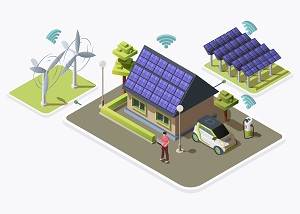

This advanced technology allows remote analysis and operational evaluation of solar plants, highlighting challenges when the system isn’t operating efficiently.
IoT allows businesses to monitor each solar panel in the farms directly to identify broken parts.
Sensors are installed for asset monitoring, and process automation is enabled via IoT technology. Sensors attached to assets monitor asset health data and provide data on current location, health status, operational status, damages, future challenges, and upcoming maintenance. This whole operation mitigates faults that cause delay and require human intervention.
How IoT helps in solar monitoring systems and asset management?
A solar monitoring system is vital for monitoring the system’s production and tracking performance. An IoT-based solar monitoring system includes high-quality sensors implanted in the assets to sense and record real-time from pyranometer or irradiance sensors, temperature sensors, environment sensors, and other similar devices. Monitoring the differences between actual and expected energy is no longer a challenging task using an IoT platform.
IoT is central to the solar energy system. Nowadays, solar farms are becoming a more profitable investment compared to conventional energy generation. Solar farm managers are able to diagnose the problems and challenges occurring in the solar panels and IoT system with the help of implanted sensors.
Future partnership actions
In the IoT world, commercial utilities and the renewable energy industry are one of the fastest growing markets for partner programmes. In coming years, the number of IoT edge-cloud and big data sellers with parent partner programme companies like Cisco, SAP, AWS, IBM, and Microsoft will increase.
Companies like Exeger and Atmosic Technologies are cooperating to design energy-harvesting products that could be integrated with IoT devices.
In 2021, Helios IoT Systems and AVEVA established a partnership to help energy
Digital transformation with IoT can and will overcome all the challenges related to complex solar energy grids. It also makes managing solar panels and controlling their energy output easier.


Today startups and many other firms are joining hands to develop IoT-powered devices that provide the most optimum solution to support the growth of the solar energy business. IoT has already changed many sectors, making lives and business processes smoother. Every sector is embracing this advanced technology, from hotels to manufacturing industries, to enhance their productivity or services and cut unnecessary expenditure. If we look around, most things are connected today, and hopefully, those which are currently left behind will soon be part of the connected world.
The author is Ritesh Sutaria, Prompt Softech CTO and director, who has over 20 years experience in product engineering and leading an organisation.
Comment on this article below or via Twitter: @IoTNow_OR @jcIoTnow
- SEO Powered Content & PR Distribution. Get Amplified Today.
- PlatoData.Network Vertical Generative Ai. Empower Yourself. Access Here.
- PlatoAiStream. Web3 Intelligence. Knowledge Amplified. Access Here.
- PlatoESG. Automotive / EVs, Carbon, CleanTech, Energy, Environment, Solar, Waste Management. Access Here.
- BlockOffsets. Modernizing Environmental Offset Ownership. Access Here.
- Source: https://www.iot-now.com/2023/07/14/132946-moving-toward-a-sustainable-future-with-iot-driven-solar-energy-systems/
- :has
- :is
- :not
- :where
- 20
- 20 years
- 2021
- a
- Able
- accessed
- accumulation
- actual
- adding
- adequately
- advanced
- Advanced Technology
- All
- allow
- allows
- already
- also
- an
- analysis
- and
- approach
- ARE
- around
- article
- AS
- asset
- asset management
- Assets
- attached
- attack
- Attacks
- author
- Automated
- Automation
- AWS
- BE
- because
- becomes
- becoming
- behind
- below
- between
- Big
- Big Data
- Broken
- business
- business processes
- businesses
- but
- by
- CAN
- Cause
- central
- challenge
- challenges
- challenging
- change
- changed
- Channel
- checked
- chief
- clients
- Climate
- Climate change
- combat
- coming
- coming years
- commercial
- Common
- Companies
- compared
- complex
- components
- Concerns
- connected
- Connections
- consumption
- controlling
- controls
- conventional
- cooperating
- Core
- Cost
- cost-effective
- Costs
- could
- critical
- Critical Infrastructure
- crucial
- CTO
- Current
- Currently
- Cut
- damage
- data
- data storage
- Database
- decisions
- delay
- dependable
- deployment
- Design
- develop
- device
- Devices
- diagnose
- differences
- different
- directly
- Director
- distribution
- due
- Dust
- each
- easier
- Effective
- efficient
- efficiently
- embracing
- emphasis
- enable
- enabled
- energy
- Engineering
- enhance
- Entire
- Environment
- environmentally
- environmentally friendly
- essential
- established
- evaluation
- Every
- example
- expected
- experience
- Face
- farm
- Farms
- fastest
- fastest growing
- faults
- firms
- For
- friendly
- from
- future
- gather
- gathered
- generation
- Grid
- Growing
- Growth
- handle
- Hands
- Health
- help
- helps
- high-quality
- highlighting
- Homes
- Hopefully
- hotels
- HTTPS
- human
- identify
- if
- implementation
- improved
- in
- inaccessible
- includes
- Increase
- individual
- industries
- industry
- Infrastructure
- initial
- initiatives
- installed
- instant
- integrated
- Internet
- intervention
- investment
- Investors
- iot
- IoT Device
- iot devices
- IT
- joining
- jpg
- leading
- learning
- left
- like
- Lives
- location
- logging
- longer
- Look
- machine
- machine learning
- maintenance
- MAKES
- Making
- malfunctions
- management
- Managers
- managing
- manufacturing
- many
- Markets
- max-width
- Modules
- Monitor
- monitored
- monitoring
- more
- most
- moving
- multiple
- needs
- network
- news
- no
- now
- number
- occurring
- of
- offer
- Offers
- often
- on
- ONE
- operating
- operation
- operational
- Operations
- operators
- optimum
- or
- organisation
- Other
- output
- over
- Overcome
- overview
- panel
- panels
- parameters
- part
- partner
- Partnership
- parts
- performance
- personal
- plants
- platform
- plato
- Plato Data Intelligence
- PlatoData
- power
- power plants
- previously
- primary
- Problem
- problems
- process
- Process Automation
- processes
- Product
- Production
- productivity
- Products
- profitable
- programme
- programmes
- project
- prominent
- provide
- real-time
- record
- related
- relatively
- remote
- Renewable
- renewable energy
- Reports
- require
- Resources
- root
- running
- SaaS
- sap
- says
- sector
- Sectors
- Secured
- security
- Sellers
- sense
- sensors
- sent
- service
- Services
- similar
- smart
- smoother
- solar
- solar energy
- solar panel
- solar panels
- solution
- Soon
- Source
- Startups
- Status
- Steps
- storage
- support
- Supports
- sustainable
- sustainable future
- Sustainable Growth
- system
- Systems
- Task
- Technologies
- Technology
- that
- The
- their
- These
- they
- things
- this
- those
- to
- today
- Topics
- Total
- toward
- towards
- track
- Tracking
- Transformation
- TURN
- two
- unnecessary
- upcoming
- using
- utilities
- via
- vital
- Vulnerable
- was
- we
- WELL
- were
- when
- whenever
- which
- WHO
- whole
- will
- wind
- wind energy
- wireless
- with
- world
- years
- zephyrnet

